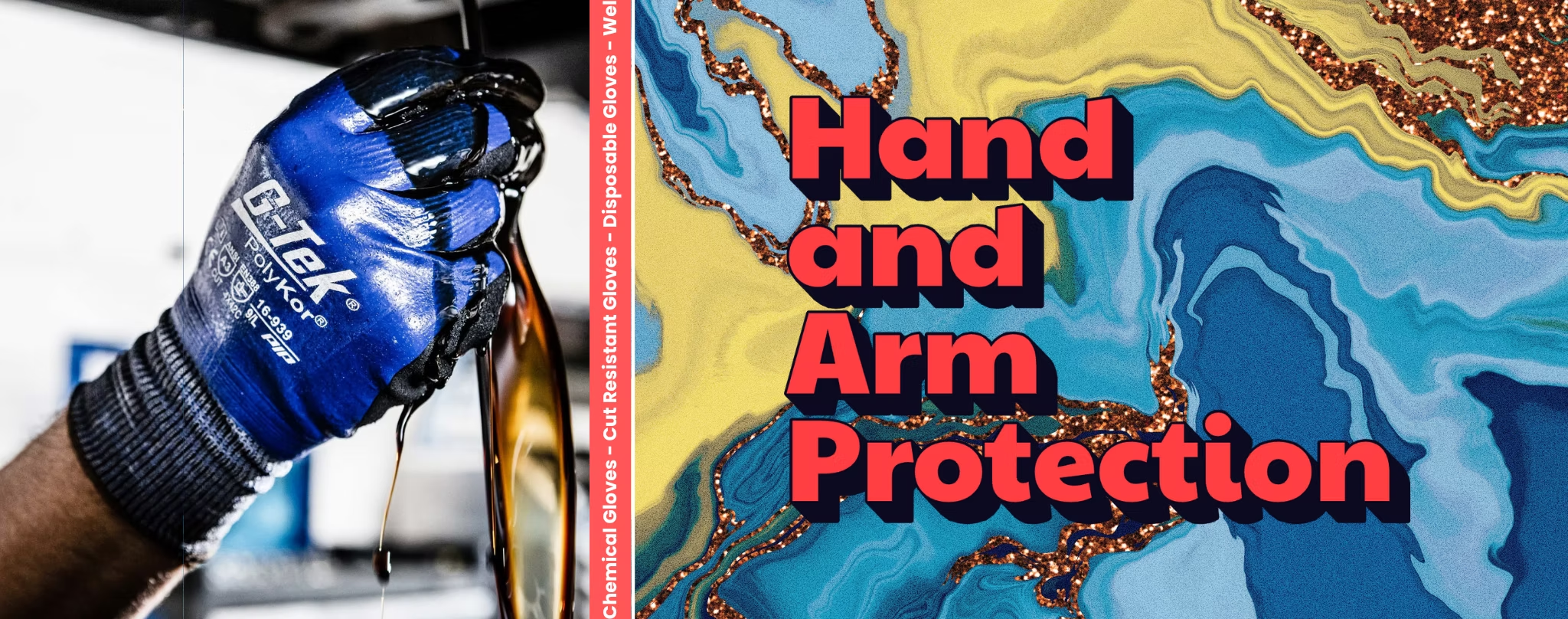Welcome back. We hope you enjoyed the previous post where we briefly mentioned what about hazardous substances are and why signage and labels are important. Today, we will touch lightly on the different types of personal protective equipment (PPE), such as gloves when working with hazardous substances.
SDS – PPE
How do we know what PPE is suitable? It is always good practice to refer to the safety data sheet (SDS) before commencing any work as the SDS explains how the material should be safely used, stored, transported and disposed. PPE information can be found under section 8 in an SDS. Below is quick summary heading of a typical SDS information.
Section 1: Substance/Mixture Identification
Section 2: Hazard identification with GHS classification and diamond labels
Section 3: Material Composition
Section 4: First Aid Measures
Section 5: Firefighting Measures
Section 6: Accidental Release Measures
Section 7: Handling and Storage
Section 8: Exposure Controls and PPE
Section 9: Physical and Chemical Properties
Section 10: Stability and Reactivity
Section 11: Toxicological Information
Section 12: Ecological Information
Section 13: Disposal Consideration
Section 14: Transport Information
Section 15: Regulatory Information
Section 16: Other Information
PPE information in SDS are important as it breaks down further into the following categories: eye/face protection, skin protection, body protection, respiratory protection. These sections are often accompanied by specific Standards from internationally accredited organization bodies so that manufacturers and providers can provide assurance of product quality and consistency to consumers with peace of mind. Standards are beneficial as it specifies products, processes, services and performance which allows compliances with legal requirements.
PPE – Gloves
Gloves are essential PPE when working with chemicals and other hazardous materials as it acts as a protective barrier layer against infection and contamination. Often, the SDS will stipulate information pertaining to material type, minimum layer thickness, breakthrough time and material tested hence it is crucial to know what type of gloves is suitable to work with a particular chemical. While ISO 374-1:2024 is the latest international standards on protective gloves against dangerous chemicals and micro-organisms, in NZ, guidance on occupational protective gloves can be found under the AS/NZS 2161.1:2016 standards series but AS/NZS 2161.10:2005 has 3 parts on protective gloves against chemicals and micro-organisms as below:
Part 10.1: Terminology and performance requirements
Part 10.2: Determinations of resistance to penetration
Part 10.3: Determination of resistance to permeation by chemicals
Make sure to check out what type of gloves is suitable before commencing works. Below are some differences between common gloves materials.
Understanding the Differences Between Neoprene, Nitrile, and Latex Gloves in PPE
When it comes to personal protective equipment (PPE), gloves are essential for safeguarding against various hazards. Neoprene, nitrile, and latex gloves are among the most commonly used types, each with unique properties and applications. Understanding their differences is crucial for selecting the right glove for the job.
Neoprene Gloves
Material: Neoprene is a synthetic rubber known for its flexibility and durability.
Examples: Ansell 87-900 Glove,
Properties:
- Chemical Resistance: Excellent resistance to a wide range of chemicals, including oils, acids, and solvents1.
- Temperature Tolerance: Performs well in both high and low temperatures1.
- Durability: Resistant to abrasion, cuts, and punctures1.
Applications: Ideal for handling hazardous chemicals, working in laboratories, and performing tasks in extreme temperatures1.
Nitrile Gloves
Material: Nitrile is a synthetic rubber derived from acrylonitrile and butadiene2.
Examples: Blue Nitrile Extended Length Chemical Glove 10, Black Dragon Nitrile Gloves, BioGlove Nitrile Disposable Gloves,
Properties:
- Chemical Resistance: Superior resistance to oils, greases, and certain chemicals2.
- Allergy-Friendly: Hypoallergenic, making it a safe alternative for those with latex allergies2.
- Strength and Flexibility: High puncture resistance and excellent elasticity2.
Applications: Commonly used in medical settings, food processing, and industrial environments where chemical exposure is a concern2.
Latex Gloves
Material: Latex is a natural rubber derived from the sap of rubber trees3.
Examples: HandPlus Latex Gloves – Low Powder-BOX,
Properties:
- Comfort and Fit: Provides a snug fit and high tactile sensitivity, making it comfortable for extended wear3.
- Biodegradability: Environmentally friendly as it is biodegradable3.
- Allergen Risk: Can cause allergic reactions in some individuals3.
Applications: Widely used in medical and dental fields, as well as in household cleaning and maintenance tasks3.
Importance of Using the Right Gloves as PPE
Selecting the appropriate gloves for specific tasks is vital for several reasons:
- Protection: Different gloves offer varying levels of protection against chemicals, pathogens, and physical hazards. Using the right glove ensures maximum safety4.
- Comfort and Efficiency: Gloves that fit well and are comfortable to wear can improve efficiency and reduce hand fatigue, leading to better performance4.
- Allergy Prevention: Choosing hypoallergenic gloves like nitrile can prevent allergic reactions, ensuring the safety and well-being of all users4.
- Compliance: Adhering to safety regulations and standards is essential in many industries. Using the correct PPE helps meet these requirements and avoid penalties4.
Conclusion
Understanding the differences between neoprene, nitrile, and latex gloves is crucial for selecting the right PPE. Each type of glove has its strengths and ideal applications, making it important to choose based on the specific needs of the task at hand. By doing so, you ensure optimal protection, comfort, and compliance with safety standards.
1: CIA Medical 2: Gloves.com 3: Atlantic Safety Products 4: Family Handyman

